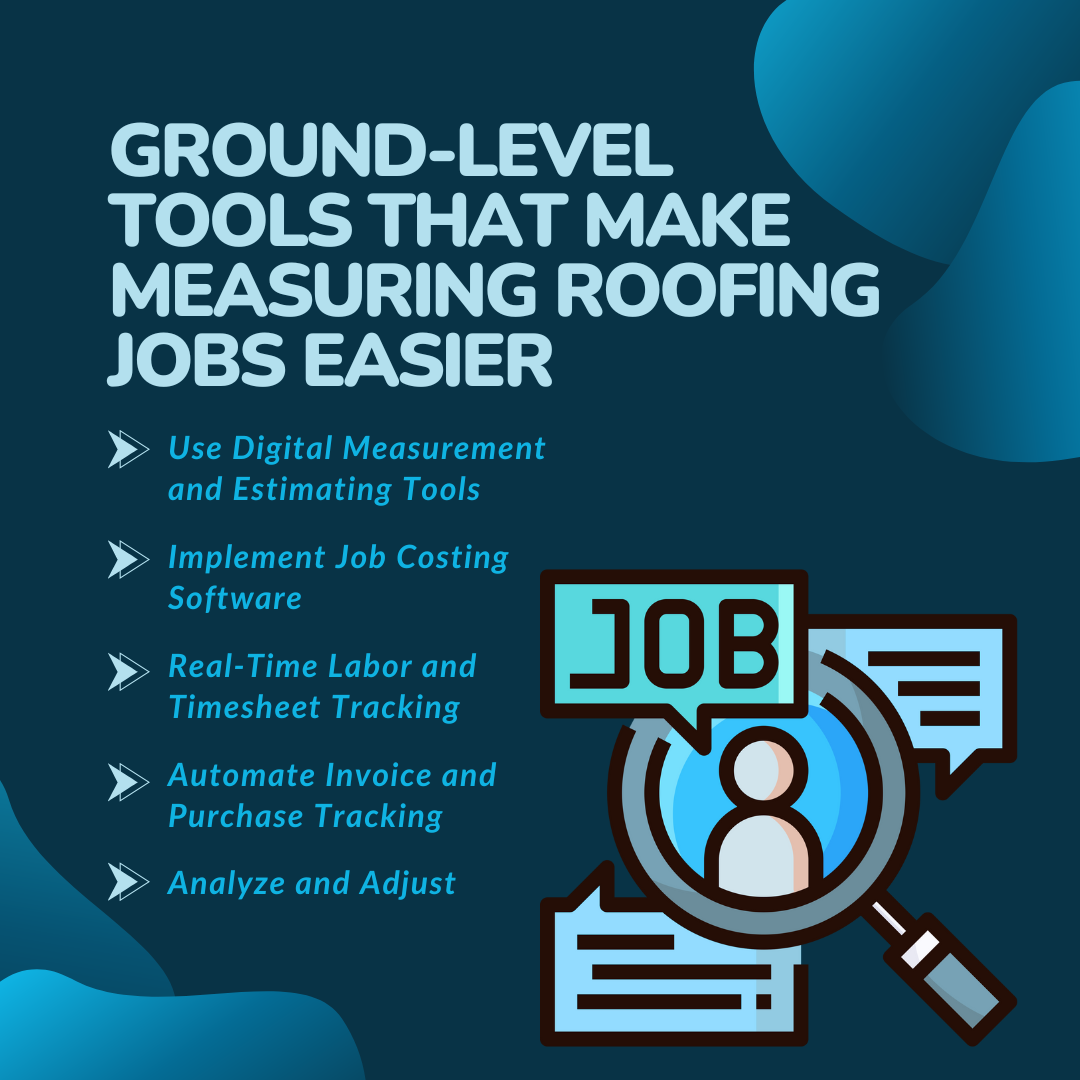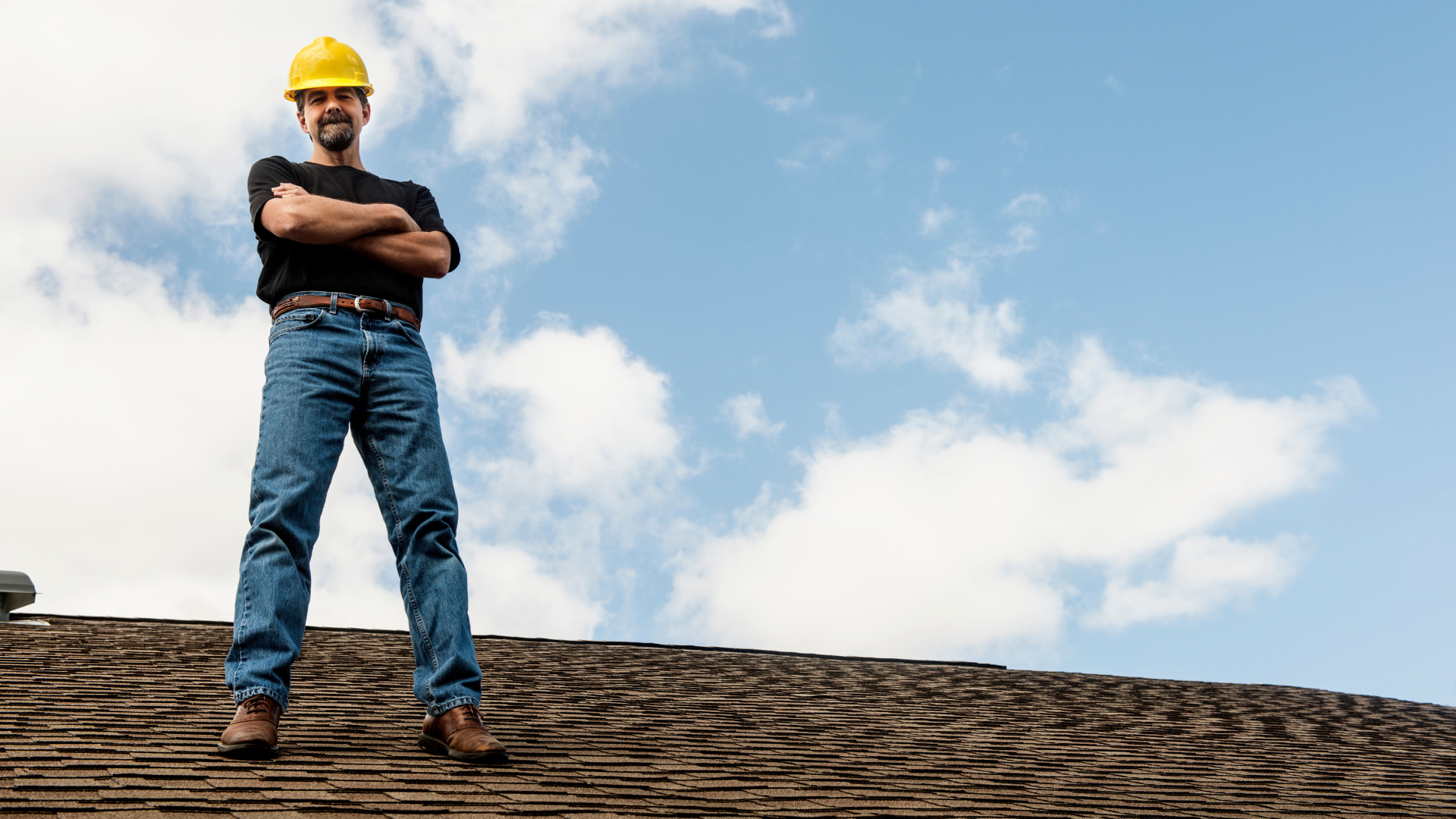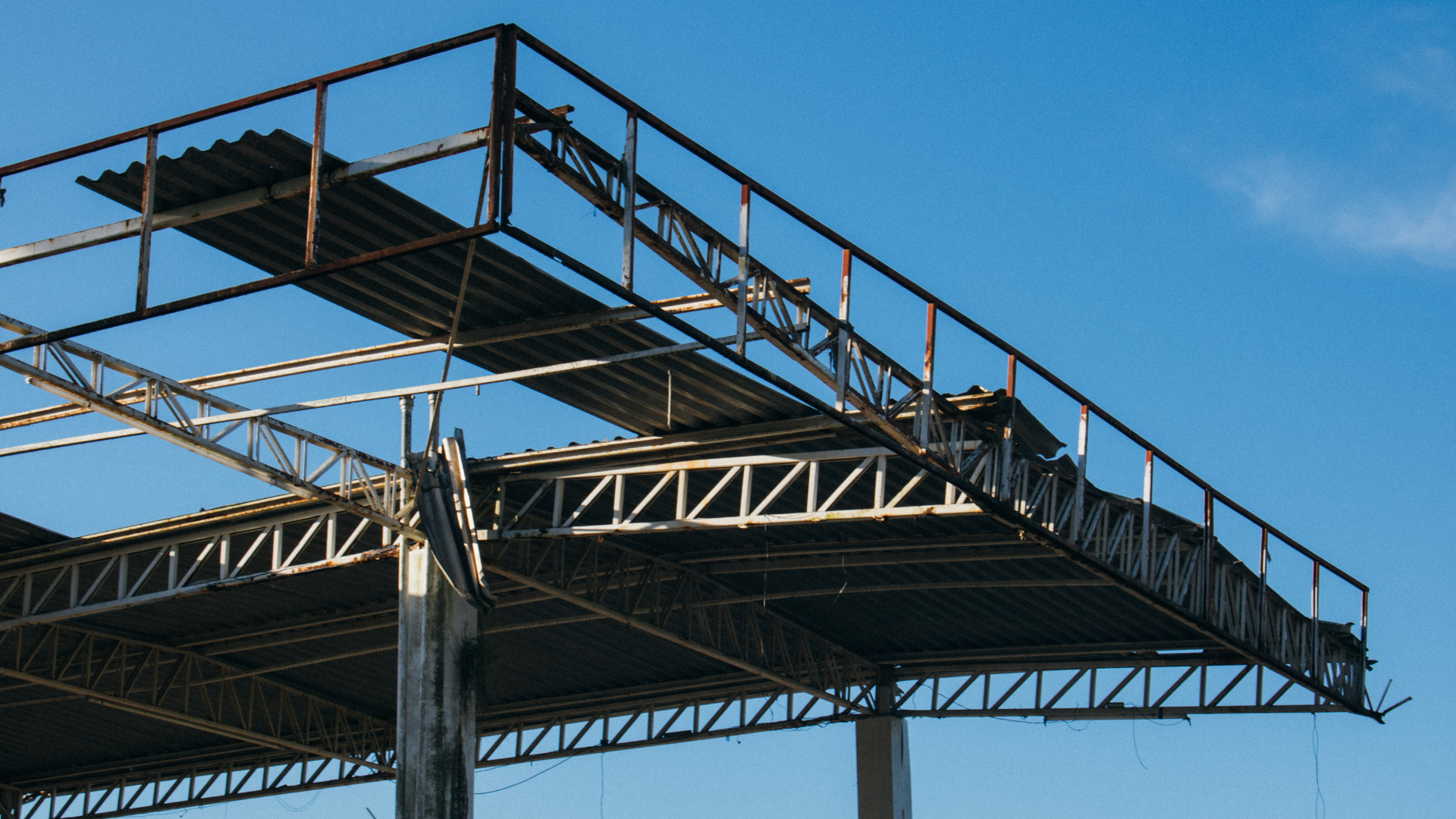July 1, 2025
Audio Overview: Listen & Learn
Every nail, every hour, every miscalculation costs money.
And if you’re a roofing contractor or project manager, you know this better than anyone else.
Roofing jobs are complex, from measuring pitches to managing crews and ordering materials. Even one overlooked expense can turn a profitable project into a financial headache.
The reality? Most contractors are still relying on guesswork to track the costs of their roofing jobs.
Tracking Roofing Job Costs in Real-Time: Why It Matters
Tracking your job costs isn’t just something that looks good on paper. It’s the difference between a project that puts money in your pocket and one that drains your margins.
In this guide, you’ll learn:
- What does job costing mean in roofing
- What you need to track (and why)
- Tools and strategies that make labor and overhead costs easier
We’re not going to throw spreadsheets or theory at you. We’re going to show you, step by step, how to track your roofing job costs in real time using intelligent systems that make your job cost visibility easier. In today’s roofing industry, real-time tracking equals real-time control.
A solution designed for roofers that eliminates the stress of staying on budget with accurate job costing.
Key Takeaways
- Track labor, materials, and overhead in real-time to avoid budget overruns.
- Use roof pitch multipliers and ground-level tools for accurate estimates.
- Rooferbase simplifies job costing with live dashboards and cost alerts.
- Avoid bidding mistakes by tracking all job details from day one.
- Smart tracking boosts profit margins, cash flow, and client trust.
What Does “Job Costing” Really Mean in Roofing?
Job costing involves tracking and accurately estimating all the costs associated with a specific job, including total material costs, labor hours, office rent, and marketing campaigns. In roofing services, it includes:
- Labor Costs: Time spent on-site, travel time, breaks, and overtime
- Material Costs: Roofing shingles, nails, underlayment, ridge caps, and anything else delivered to the job
- Overhead Costs: Indirect costs like insurance, admin time, permits, fuel, equipment, and office supplies
Many roofers price jobs based on gut feeling, ballpark estimates, or past experiences. However, with material prices constantly fluctuating and labor hours varying per project, this method can lead to errors.
If you don’t track all the costs in real time, you’ll never really know your profit margin until it’s too late.
Why Real-Time Tracking Matters More Than Ever
Did you know?
Only 31% of construction projects stay within 10% of their planned budget, meaning roughly 69% face significant overruns due to poor real-time cost visibility.
Roofing jobs today are not what they were five years ago. Prices change. Customers demand detailed estimates. Labor is harder to find. Delays are more common with a flared-up total cost due to guessing.
Waiting till a job is done to do the math? That’s risky.
Hence, with real-time tracking, you can catch cost overruns early, as the contractor did when they identified a material cost spike halfway through a solar panel re-roofing project.
You can adjust immediately, saving thousands and keeping the client happy.
Unlocking Real-Time Tracking Advantages: How It Transforms Your Day
- Instant Financial Visibility: Know how much you’ve spent at any moment.
- More Accurate Estimates: Use past data to estimate better, bid smarter, and win jobs.
- Improved Cash Flow: Avoid surprises that throw off your balance.
- Enhanced Project Control: Make decisions as the project progresses, not after it's completed.
- Better Communication: Everyone, from foreman to admin, knows what’s going on.
Find out Why your roofing business benefits from specialized roofing software.
Breaking It Down: What Exactly Should You Be Tracking?
1. Labor Costs
Labor isn’t just about who’s on the roof; it's about so much more, including that extra hour spent “waiting on shingles.”
- Track hours worked vs. hours estimated
- Include setup, tear-down, and travel
- Don’t forget overtime or delays due to weather or building codes
2. Overhead Costs
Remember to look beyond just the roof; your business has expenses, too. Every little thing adds up, so it's essential to keep everything in mind.
- Office rent, employee wages, insurance
- Fuel, permits, inspections, and phone bills
- Allocate to each specific job for a clear picture
3. Material Costs
Materials tend to become unpredictable. That “extra bundle” can accumulate if you’re not cautious. Also, remember to account for extras that no one mentioned until demo
day.
- Track in real time as materials arrive
- Record damage, wastage, and returns
- Include extras like satellite dishes, solar panels, and multiple layers
4. Subcontractors and Rentals
Rentals and subscriptions can drain your budget. Be very clear about every detail because if that lift sits unused in a driveway, you're wasting money too.
- Daily rates, rental periods, and idle time
- Delays from third-party vendors can affect your bottom line
5. Roof Pitch Multiplier and Measurement Accuracy
Here's the best thing that helps you make more accurate estimates and avoid “Oops, it was steeper than it looked” moments.
- Use pitch multipliers for sloped roofs
- Rely on ground-level squares for fast, accurate calculations
- Reduces human error and helps produce accurate estimates
Also read: What’s the Cost of Wrong Roofing Measurements? And How Can You Avoid Them?
The Roofing Bid Trap: Why So Many Estimates Go Wrong
Bidding can feel like a race. You’re trying to win the job, stay competitive, and still make enough to cover your team, your tools, and your time. But in that rush, many contractors end up underbidding without even realizing it. What initially appeared to be a quick win turned into a painful lesson.
It’s not about carelessness, it’s about not having the right system in place.
Here’s where bids often go off track:
- Forgetting indirect costs like fuel, office rent, equipment depreciation, and admin time. These costs don’t show up on the roof, but they absolutely show up in your profit margins.
- Underestimating complex roof structures, such as steep pitches or multiple layers. One extra layer means more labor, more time, more material, and more money out of your pocket if it wasn’t priced in.
- Not accounting for delivery fees, tool rentals, or extra services like satellite dish removals or solar panel prep. These are real job site costs that sneak up on you.
Let's take a look at an example to understand better:
You quote a job for asphalt shingles on what appears to be a basic slope. You assume a simple tear-off and install, square foot cost calculated, and you’re confident.
However, once on-site, the client wants an upgrade, including solar-ready roofing, ridge caps, and possibly extra ventilation.
The roof measurements indicate a larger surface area than expected due to the pitch, and there are more layers than the original walkthrough revealed.
Suddenly, your basic package no longer covers it. You need more hours from your crew, additional materials, and possibly even an extra team member to stay on schedule.
All this happened simply because you overlooked the red flags in real-time at the site.
In a nutshell: That’s how profits disappear!
Catching Red Flags Early With Real-Time Tracking
Without real-time tracking, you won’t know how many layers of problems exist until the job’s done.
Now imagine having a step-by-step guide built into your estimating process that factors in all of this, including roofing materials, the number of layers, roof pitch, extra costs, the client’s information, and more, with less effort and greater accuracy.
With real-time tracking and detailed cost breakdowns, you’ll know exactly how many hours, how much labor, and what materials are needed before you step on-site. That means more confidence in your bids, more jobs you can actually win and profit from, and a much easier process for everyone involved.
Professional documents + smart pricing = more money with less stress.
You’ve worked hard for your craft; make sure your bids reflect it.
Imagine looking at your dashboard and seeing the roofing project trending 12% over budget; you can act now, not next month.
How to Track Roofing Job Costs in Real Time

Want to stay profitable from day one? Here’s a ground-level approach to track every job cost, from labor hours to material orders, in real-time using tools that actually fit
your job site workflow.
1. Use Digital Measurement and Estimating Tools
- Utilize aerial measurement technology and digital templates to obtain precise roof measurements and material estimates, then integrate these directly into your job costing system.
- Update material costs in real time by syncing with local suppliers and accounting for discounts or special deals.
2. Implement Job Costing Software
Adopt roofing-specific job costing or CRM software like Rooferbase that allows you to:
- Capture labor, material, equipment, and overhead costs as they occur.
- Automatically compare estimated versus actual costs and generate profitability reports.
- Integrate with supplier databases for real-time material pricing and order tracking.
3. Real-Time Labor and Timesheet Tracking
- Utilize mobile apps to track worker hours, locations, and activities in real-time, ensuring that payroll and job costing are always up to date.
- Automate timesheet reporting and wage calculations to eliminate manual errors and reduce admin time.
4. Automate Invoice and Purchase Tracking
- Implement invoice automation to capture and enter supplier invoices as soon as they arrive, preventing missed or delayed cost entries.
- Utilize purchase automation to track material orders and deliveries in real-time, ensuring all costs are accounted for as soon as they occur.
5. Analyze and Adjust
- Regularly review real-time dashboards and reports to spot trends, catch overruns early, and make data-driven decisions on resource allocation.
- Use historical averages from previous jobs to refine future estimates and bidding strategies
The ROI of Getting It Right
Implementing real-time tracking – whether through industry tools like Rooferbase or similar platforms- can give you instant cost visibility, tighter profit control, and smarter project decisions, all before you're locked into an over-budget position.
> Contractors who use job tracking software have reported:
- 47% increase in project profitability, jumping from 15% to 22% profit margins
- More accurate, professional roofing estimates
- Reduced rework and callbacks
- Happier clients who feel informed and in control
> For Roofing Contractors, what do these benefits mean?
- Real-time cost tracking = faster response to overruns (labor, material, or overhead).
- Improved cost recovery from extras like additional layers, slope changes, or client requests.
- Eliminate delays in budgeting accuracy, especially when managing steep pitches or add-ons.
For more insights, take a look at Inside the Life of a Roofer Employing Software from Day One
> Choosing the Right Tool: What to Look for in Roofing Job Cost Software
When choosing roofing software, make sure it offers:
- Real-time labor and material tracking
- Roof pitch multiplier calculator
- Cost alerts and job dashboards
- Cloud-based document storage
- A user-friendly mobile app
Clients today want transparency. They want detailed job info, fair pricing, and accurate measurements.
So, it’s not just about roofing anymore; it’s about running a smarter, leaner business.
Seeking the ideal solution for your business? Look no more, presenting Rooferbase!
Why Rooferbase Is Built for Roofing Jobs Cost
Tired of juggling estimates, costs, and client info across five tools?
Rooferbase is your all-in-one job costing software designed specifically for the roofing industry. Here’s what it offers:
- Real-Time Job Cost Tracking: Labor, material, and overhead costs in one place
- Roof Pitch Calculators + Takeoff Tools: Ensure accurate estimates
- Ground-Level Measurements: Get square footage without a ladder
- Document Uploads + Team Communication: Everything logged and synced
- Alerts When Budgets Go Off Track: Fix issues before they impact profit
Works for small crews or growing roofing businesses. No tech skills required.
Let Rooferbase show you how simple cost tracking can be, with just a few clicks.
Take a closer look at: Best Roofing Software 2025 – Tools to Increase Speed and Sales.
Conclusion:
Tracking costs isn’t just an overhead; it’s a smart profit strategy.
You’re not merely installing shingles; you're operating a business. This requires tracking, managing, and ensuring profitability for every project.
Start small. Stay consistent. Let technology handle the numbers so you can focus on the build.
Upgrade to Rooferbase Today!
Rooferbase is here to make that easier, faster, and more profitable, because you deserve to grow without the guesswork.
FAQs
Q1: How do I estimate the total labor cost accurately?
Keep track of your crew's hours every day, including travel and prep time. Using GPS and time logs helps ensure that everything is accurate and stress-free, allowing you to focus on your project with peace of mind.
Q2: What’s the roof pitch multiplier, and how does it affect job costing?
It adjusts the surface area based on the slope, ensuring your estimates are accurate. If you get it wrong, your material estimate may be inaccurate, so it's essential to pay attention.
Q3: Can Rooferbase calculate costs for solar panel and asphalt shingle jobs, too?
Yes, you can easily input different material types, layers, and additional features, such as ridge caps or satellite add-ons.





